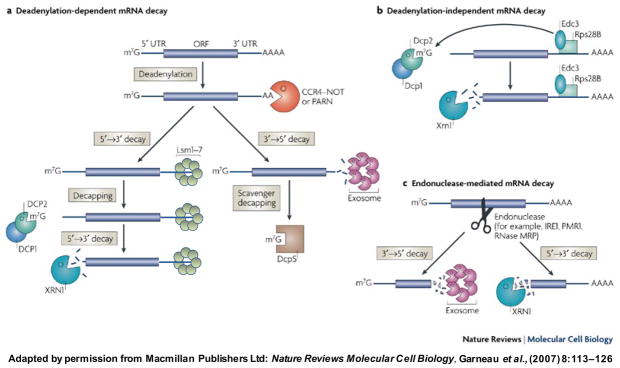Figure 1.
a. Deadenylation-dependent mRNA decay pathways. The 3′-poly(A) tail is removed by the Ccr4–NOT or PARN deadenylases. Following deadenylation, two mechanisms can degrade the mRNA further: either decapping-dependent 5′→3′ decay or 3′→5′ exosome-mediated mRNA decay. In the 5′→3′ decay pathway, the Lsm1–7p complex associates with the 3′ end of the mRNA transcript and induces decapping by the Dcp1p/Dcp2p complex. The mRNA is then degraded by the 5′–3′ exoribonuclease, Xrn1p. Alternatively, the exosome can mediate 3′–5′ digestion of the deadenylated transcript. b. Deadenylation-independent mRNA decay pathways require recruitment of the decapping machinery. For example, in yeast, Rps28B protein interacts with Edc3p to recruit the Dcp1p/Dcp2p decapping enzyme. Following decapping, the mRNA is degraded by Xrn1p. c. Endonuclease-mediated mRNA decay involves an internal cleavage event in an mRNA, generating two fragments with unprotected ends. These fragments subsequently undergo digestion by Xrn1p or the exosome. (Adapted from reference 5).

